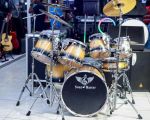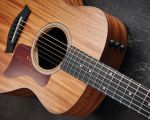Best Electronic Drum Pads for Practice: A Comprehensive Guide
As a drummer, I’ve spent countless hours experimenting with different electronic drum pads to find the perfect setup for practice. Whether you're a beginner or an experienced drummer looking for a quieter, more compact way to practice, electronic drum pads offer a variety of features that can enhance your skills and provide a more accessible way to practice at home. Today, I'll walk you through some of the best options on the market, why they are great choices, and share some of my personal experiences with them. By the end of this article, you’ll have all the information you need to pick the right electronic drum pad for your practice sessions.
1. Why Choose Electronic Drum Pads for Practice?
Electronic drum pads have revolutionized how drummers practice, especially for those living in apartments or shared spaces. The biggest benefit is the quietness—they allow you to practice without disturbing anyone around you. Additionally, these pads provide an array of features such as customizable sounds, volume control, and even connectivity to recording equipment or learning software. When I first started using electronic drum pads, I found that they helped me hone my timing and rhythm without the loud crash of acoustic drums. They’re also incredibly portable, making them ideal for practice on the go.
2. Key Features to Look for in Electronic Drum Pads
Choosing the best electronic drum pad isn’t just about picking the first one you find. There are several key features that can make or break your practice experience. Here’s a breakdown of the most important things to consider:
Sound Quality
Sound is everything when it comes to practicing drums. You want a pad that delivers high-quality, realistic drum sounds. Some electronic drum pads come with built-in sound libraries, while others allow you to connect to external modules or apps for an even wider range of sounds. The sound quality should be clear and distinct, making it easy to identify your drumming patterns and mistakes.
Responsiveness
Responsiveness is crucial, especially when you’re practicing complex patterns. The pad should react well to your touch, whether you’re playing lightly or hitting hard. The best drum pads mimic the feeling of acoustic drums, with varying levels of sensitivity to match your playing style.
Size and Portability
Another factor to keep in mind is the size of the pad. If you plan to take your drum pad on the go, you’ll want something compact and lightweight. If you have limited space at home, a smaller, more portable pad may be ideal. However, if you want something that offers a larger playing surface for more complex rhythms, look for a pad with a wider diameter.
Connectivity and Extras
Modern drum pads often come with extra features such as Bluetooth, USB ports, and MIDI compatibility. These features are useful for those who want to connect to recording software, practice along with music, or use the pad with a drum module. In my experience, having these extras opens up a whole new world of possibilities for practice, learning, and even composing music.
3. Top Electronic Drum Pads for Practice
1. Roland TD-27
The Roland TD-27 is a top-of-the-line electronic drum pad that has truly impressed me. It comes with advanced digital trigger technology that makes the response feel incredibly close to an acoustic drum. The TD-27 features an extensive range of sounds, perfect for every drummer. Whether you’re practicing rock beats, jazz rhythms, or electronic grooves, this pad has you covered. The high-definition sounds and customization options are a dream for any serious drummer looking to improve.
2. Yamaha DTX402K
If you're on a budget but still want a quality electronic drum pad, the Yamaha DTX402K is a fantastic choice. This model offers great sound quality, a variety of built-in drum kits, and an easy-to-use interface. I’ve found it to be perfect for beginners who want to practice without spending a fortune. The compact design makes it easy to store when not in use, and the built-in practice functions are ideal for those who are looking to improve their drumming skills progressively.
3. Alesis Nitro Mesh Kit
The Alesis Nitro Mesh Kit is another great option for those looking to practice on a budget. What sets this kit apart is the mesh drum heads, which offer a much more realistic feel than traditional rubber pads. The response is smooth, and the noise level is still low enough to practice in your home. I’ve used the Alesis Nitro Mesh Kit in my own practice sessions, and it’s proven to be both durable and responsive. If you’re looking for a well-rounded kit that won’t break the bank, this is definitely worth considering.
4. Roland PDX-100
If you’re already playing with an existing electronic drum kit but want to expand your setup, the Roland PDX-100 is an excellent option. This pad features a unique, dual-ply mesh head that enhances both the feel and the sound of your drumming. I’ve added it to my own kit to increase my playing area and to make the practice feel more versatile. The PDX-100 is known for its durability and realistic response, making it ideal for intermediate to advanced drummers.
4. My Personal Experience with Electronic Drum Pads
When I first decided to invest in an electronic drum pad, I was skeptical. I’d always been a traditionalist, thinking nothing could replace the feel and sound of acoustic drums. But after spending some time with electronic pads, my view completely changed. I began using an electronic drum pad for my late-night practice sessions, which allowed me to play without disturbing anyone in my apartment complex. Over time, I noticed significant improvements in my hand coordination and timing, which helped me in my live performances. The ability to adjust the volume and use different sounds for specific exercises made practicing much more efficient and enjoyable.
5. Troubleshooting Common Issues with Electronic Drum Pads
Although electronic drum pads are fantastic, they’re not without their issues. One common problem is the sensitivity of the pad. Sometimes the pads might not register a light touch or may double-trigger, which can be frustrating during practice. If this happens, check your settings—many pads allow you to adjust the sensitivity of the triggers. Another issue is that the sound can sometimes be too “machine-like” compared to acoustic drums. While this can’t be completely fixed, many pads offer ways to add reverb or alter the tone to get a more natural sound.
Another challenge I’ve faced is maintaining the pad’s quality over time. Pads can wear down, especially with heavy use. To extend the life of your electronic drum pad, it’s important to keep it clean and avoid excessive force when playing. Most brands offer replacement parts, so if a trigger or head starts to wear out, you can usually replace it without needing a whole new unit.
With these tips in mind, you’ll be ready to tackle any challenges and get the most out of your electronic drum pad.
6. Conclusion
Electronic drum pads are an excellent investment for anyone looking to improve their drumming skills while practicing in a quieter, more convenient setting. Whether you're just starting or you’ve been playing for years, there’s an electronic pad out there that suits your needs. From budget-friendly options to high-end kits, the variety of drum pads available ensures that you can find the right one for your practice routine. So, if you're looking to take your drumming to the next level, an electronic drum pad is definitely worth considering.








